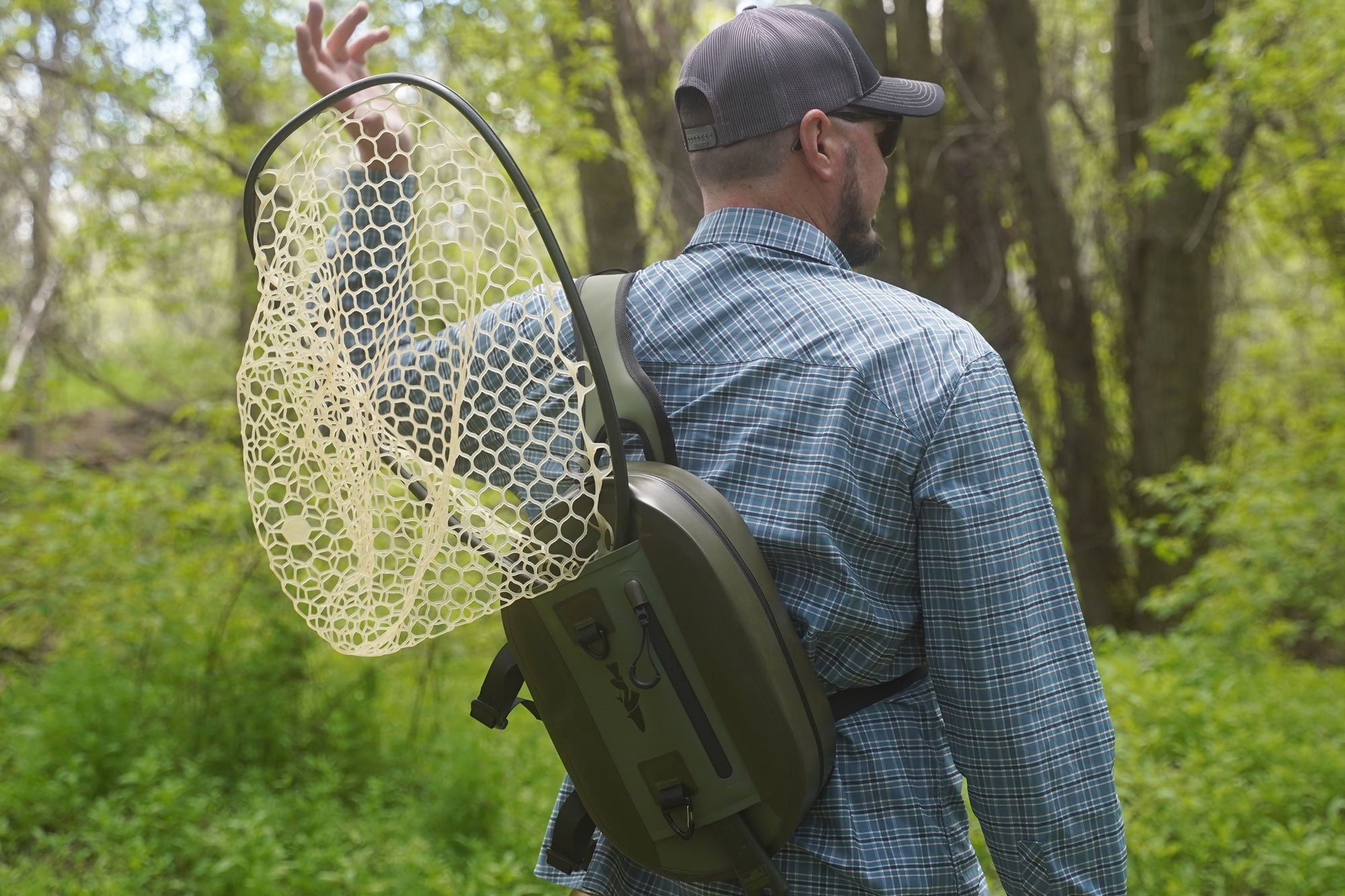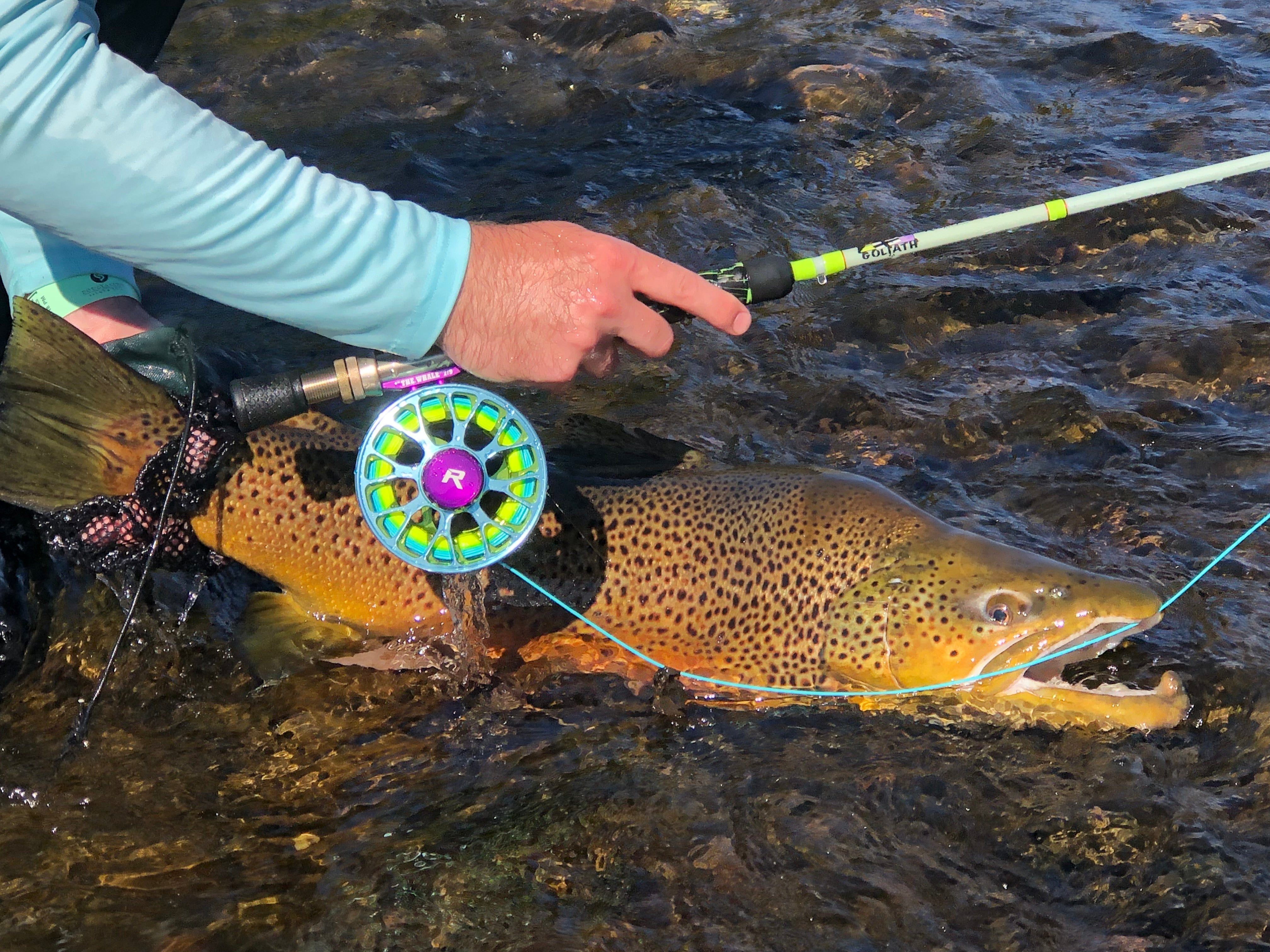The late July sun hung low over Swan Valley as I wrestled with a 22-inch cutthroat that had absolutely demolished my Parachute Hopper. The fish tore through the braided channels near Conant, stripping line with the kind of authority that makes you question your knot-tying skills. My guide, a fifth-generation Idaho angler, kept the boat steady in the current while I worked the fish toward the net. When we finally brought that native Yellowstone cutthroat to hand, its buttery flanks gleaming in the afternoon light, I understood why the South Fork of the Snake River holds a special place in the hearts of dry fly enthusiasts across the country. This 64-mile tailwater flowing from Palisades Dam through the heart of eastern Idaho offers some of the most consistent and productive trout fishing you'll find anywhere in the Rocky Mountain West.
Understanding the South Fork's Three Distinct Sections
The South Fork of the Snake River divides into three unique fishing zones, each offering distinct characteristics and opportunities. The Upper section, running from Palisades Dam through Swan Valley to the Swan Valley Bridge, spans roughly 12 miles of accessible water. This stretch sees the most angler traffic due to easy access points, but don't let that deter you. The wide, braided channels here create ideal habitat for both cutthroat and rainbow trout, with fish densities exceeding 5,000 per mile in some stretches.
The Canyon section begins below Swan Valley Bridge and continues for 24 miles to Byington. This is where the South Fork truly shows its character. Towering canyon walls rise above the river, while cottonwood groves line the banks and create premium trout habitat. The Canyon section offers more solitude and some of the best dry fly fishing on the river. Access points include Conant, Cottonwood, and several other boat ramps, though the remote 15-mile canyon stretch between certain access points remains completely off the road system.
Below Byington, the Lower section transitions from mountainous terrain into broader agricultural valleys before joining the Henry's Fork. This stretch maintains excellent fishing pressure while offering four public boat ramps. Brown trout populations increase significantly in the lower river, particularly during fall when these fish stage for their spawn. I've had exceptional streamer fishing in the Lower section during September and October, with browns over 20 inches becoming more common as you work downstream.
Mastering the Salmonfly Hatch and Summer Dry Fly Season
Nothing quite compares to the South Fork's legendary salmonfly hatch. This spectacle typically begins in late June or early July, depending on water temperatures and flows. These massive 2-3 inch stoneflies emerge by the thousands, creating a feeding frenzy that brings even the most selective trout to the surface. The hatch progresses upstream at roughly 4 miles per day, starting in the warmer lower stretches and moving toward the dam.
Timing your trip to coincide with the salmonfly hatch requires some flexibility. I've learned to monitor reports from local fly shops closely and maintain backup dates. When you hit it right, the fishing borders on absurd. I've personally witnessed days where our boat hooked over 30 fish before noon, with average sizes running 16-18 inches and trophy cutthroat pushing past 22.
Following the salmonflies, golden stoneflies emerge in abundance. The South Fork maintains excellent dry fly opportunities through the entire summer season. Pale Morning Duns hatch consistently from late June through August, particularly in the riffle sections and along grassy banks. Green drakes provide a brief but explosive window in canyon sections during early July. By late summer, terrestrials become the dominant food source. Hoppers, ants, and beetles work exceptionally well when fished tight to the banks throughout August and September.
The famous salmonfly hatch demonstrates proper dry fly technique, showing how to present large stonefly patterns along the banks where fish aggressively feed during this incredible emergence.
Fall Streamer Fishing for Trophy Browns
Fall transforms the South Fork into a streamer fisherman's paradise. As September transitions into October, brown trout enter their pre-spawn feeding phase and become increasingly aggressive. The cottonwood trees lining the river explode in brilliant yellows and oranges, creating some of the most stunning scenery you'll encounter while fly fishing.
During fall trips, I focus my streamer efforts on the Lower and mid-Canyon sections where brown trout concentrations run highest. Dark patterns like black and olive Zonkers, Muddlers, and articulated sculpins produce consistently. I typically fish streamers on a 200-250 grain sink tip with 0X-2X tippet, making aggressive strips against cut banks, log jams, and deeper runs.
The key to fall success involves covering water efficiently. I'll make 20-30 casts into a productive run, varying retrieve speeds and angles before moving on. Browns often follow streamers multiple times before committing, so don't give up on a spot after a single chase. Some of my most memorable fish have come on the fifth or sixth cast to the same seam after previous follows.
Blue-winged olives provide excellent dry fly opportunities during fall as well. Cooler evening temperatures and cloudy days trigger BWO hatches that can blanket the river. Size 18-20 Parachute Adams and CDC duns work well when fish are keyed on these smaller mayflies. The combination of BWO dry fly fishing in the mornings and aggressive streamer work in the afternoons makes fall my favorite time on the South Fork.
Gear Recommendations and River Tactics
A 5 or 6 weight rod handles the South Fork perfectly. I prefer 9-foot, medium-action rods that can handle both delicate dry fly presentations and turn over larger hopper-dropper rigs. For streamer fishing, a 6 or 7 weight provides better line control and more authority when setting hooks on big browns. Bring both floating and sink-tip lines.
For wading the South Fork, quality boots with aggressive traction make all the difference. The river bottom consists of slick, rounded cobble that can send you swimming without proper footwear. Korkers wading boots with interchangeable sole systems provide the confident footing needed when navigating the South Fork's varied bottom structure.
My standard leader setup for dry flies runs 9-12 feet tapered to 4X-6X, depending on fly size and fish wariness. For nymphing, I use 7.5-9 foot leaders with 3X-4X tippet and weight adjusted to water depth. The South Fork requires frequent tippet checks – those sharp cutthroat teeth will fray your leader quickly.
Polarized sunglasses are absolutely essential. Bajio or Hobie polarized eyewear helps you spot feeding fish, read water structure, and navigate safely when wading. The South Fork's clarity allows you to sight-fish regularly, particularly in the braided sections and along shallow banks.
For extended float trips, organization matters. Decked Truck Storage systems keep fly boxes, extra reels, and terminal tackle accessible yet protected. Nothing ruins a fishing day faster than discovering your backup leaders are soaked or your flies are scattered across the truck bed.
When camping along the river, Grayl Water Bottles provide safe drinking water from tributary streams and springs. The purification technology handles everything the backcountry throws at it, giving you one less thing to worry about during multi-day trips.
Navigating Special Regulations and Conservation Efforts
The South Fork's reputation as a world-class fishery stems from decades of conservation work and special regulations designed to protect native cutthroat populations. Understanding and following these rules ensures the fishery remains healthy for future generations.
Current regulations require anglers to harvest all rainbow trout they encounter. This controversial rule exists because rainbow trout compete directly with native Yellowstone cutthroat and Snake River fine-spotted cutthroat. The Idaho Department of Fish and Game implemented the Angler Incentive Program, which places microchips in rainbow trout and cutt-bow hybrids. Anglers who harvest these fish and return the heads to authorities receive monetary rewards.
The daily bag limit allows six trout, but all fish between 8-16 inches must be released. This slot limit protects mid-sized breeding cutthroat while allowing harvest of smaller fish and true trophies. Additionally, only two non-rainbow trout may be kept, further protecting the native cutthroat population.
These regulations spark considerable debate among anglers and guides. Many guiding operations depend on rainbow trout for their business, creating tension between conservation goals and economic realities. Regardless of your position on the issue, following current regulations remains mandatory. Check the Idaho Fish and Game website for the most current rules before your trip.
Conservation organizations including Trout Unlimited work actively to restore and maintain South Fork habitat. Bank stabilization projects, riparian restoration, and water quality monitoring all contribute to keeping this fishery productive. Consider supporting these efforts through membership or donations.
FAQ: South Fork Snake River Fly Fishing
When is the best time to fish the South Fork Snake River?
The South Fork offers excellent fishing from May through October, with peak dry fly season running from late June through September. The legendary salmonfly hatch typically occurs in late June or early July, creating absolutely incredible fishing for 3-4 weeks. Fall (September-October) provides outstanding streamer fishing for trophy brown trout combined with BWO hatches and fewer crowds. Spring fishing can be excellent but requires monitoring flows closely, as spring runoff varies considerably year to year.
What flies should I bring for the South Fork?
Your fly selection depends on timing, but essential patterns include: Salmonfly and Golden Stone dry flies (#4-8) for early summer, Parachute Hoppers (#8-12) for mid-summer through fall, PMD patterns (#14-18), BWO dries and nymphs (#18-22) for fall, Pheasant Tail and Prince nymphs (#12-18), Pat's Rubber Legs (#6-10), and streamers including Zonkers, Muddlers, and Sculpins (#2-6) for fall brown trout. Local fly shops in Swan Valley and Irwin provide current hatch information and patterns tied specifically for South Fork conditions.
Can I wade fish the South Fork or do I need a drift boat?
While drift boats provide the best access to prime water, wade fishing opportunities definitely exist on the South Fork. The Upper section near Swan Valley offers excellent wade fishing along grassy banks and in braided channels, particularly during late summer and fall when flows decrease. Look for access at Palisades Dam, Irwin, Spring Creek Bridge, and other public access points. The Canyon section has limited wading due to deeper water and faster currents. Fall provides the best wade fishing conditions when flows drop to 6,000-8,000 CFS.
What are the fish species and average sizes on the South Fork?
The South Fork primarily holds native Yellowstone cutthroat and Snake River fine-spotted cutthroat trout, rainbow trout, rainbow-cutthroat hybrids, and brown trout. Average fish run 15-17 inches, with plenty of fish exceeding 20 inches caught regularly. The river maintains one of the highest trout densities in the country, with some sections holding over 5,000 fish per mile. Trophy cutthroat reach 22-24 inches, while brown trout exceeding 25 inches inhabit the lower sections.
What access points should I use for different sections?
The Upper section offers access at Palisades Dam, Huskys, Irwin, and Spring Creek Bridge. Canyon section access includes Conant, Cottonwood, Heise, and Wolf Flats. The Lower section provides access at Byington and Lorenzo, plus several other boat ramps. A remote 15-mile canyon stretch has no road access or public boat ramps. Shuttle services including Julie's Shuttles (208-483-2903) and Steve's Shuttles (208-313-5443) operate in the area for float trips.
Are there specific regulations I need to know?
Yes, the South Fork has special regulations to protect native cutthroat. The daily limit is six trout total, but all fish 8-16 inches must be released, and only two non-rainbow trout may be kept. There is NO LIMIT on rainbow trout or rainbow-cutthroat hybrids – anglers are encouraged to harvest all rainbow trout encountered. The Angler Incentive Program provides monetary rewards for harvesting tagged rainbow trout and hybrids. Always check current regulations before fishing as rules may change.
What hatches should I expect throughout the season?
| Month | Primary Hatches | Recommended Flies | Fishing Conditions |
|---|---|---|---|
| May | Midges, BWOs, Skwalas | Midge clusters, BWO nymphs & dries, Skwala stones | Variable flows, focus slow water |
| June | BWOs, PMDs, Salmonflies (late) | BWO patterns, PMD emergers, Salmonfly dries (#4-8) | Prime time as salmonfly hatch begins |
| July | Salmonflies, Golden Stones, PMDs, Green Drakes | Large stone patterns, Golden Stones, PMD dries | Peak dry fly season |
| August | PMDs, Golden Stones, Caddis, Terrestrials | Hoppers, ants, beetles, PMDs, caddis | Excellent hopper-dropper fishing |
| September | Terrestrials, Caddis, BWOs, Mutant Stones | Hoppers, ants, Mutant Stones, BWO dries | Fall colors, fewer crowds |
| October | BWOs, Midges | BWO patterns (#18-22), midge clusters, streamers | Streamer season for browns |
Getting There: Travel and Access Information
From Idaho Falls Regional Airport (IDA): Idaho Falls provides the closest major airport access to the South Fork, located approximately 60 miles from Swan Valley. Rental cars are available at the airport. Take US-20 East toward Rexburg, then follow ID-33 East through Driggs. Connect to ID-31 South toward Swan Valley, which places you in the heart of South Fork country. Total drive time runs about 1.5 hours.
From Jackson Hole Airport (JAC): Jackson Hole Airport offers another excellent access point, sitting just 45 minutes from the Upper South Fork. Take WY-22 West over Teton Pass into Idaho, then follow ID-33 North to Victor and continue to Swan Valley. This scenic drive provides stunning Teton Range views.
From Salt Lake City International Airport (SLC): For those willing to make a longer drive, Salt Lake City sits approximately 4 hours from the South Fork. Take I-15 North toward Pocatello, then follow I-86 East and US-26 East through Idaho Falls and up to Swan Valley. This route works well for anglers wanting to explore multiple Idaho waters during a single trip.
Recommended Fly Shops
South Fork Anglers – Located in Swan Valley, this full-service shop offers guided trips, quality gear, and current fishing reports. The staff knows every inch of the South Fork and provides honest, detailed information about current conditions. They stock extensive fly selections tied specifically for South Fork hatches.
Henry's Fork Anglers – While primarily focused on the Henry's Fork, this Last Chance shop maintains excellent South Fork knowledge and carries appropriate gear and flies. Their guide staff regularly fishes both rivers and can provide valuable intel.
WorldCast Anglers – Based in Jackson, Wyoming, WorldCast guides extensively on the South Fork and offers full guide services, gear, and lodging recommendations. Their fishing reports and hatch information remain among the most reliable in the region.
Wrap Up
The South Fork of the Snake River represents everything that makes western fly fishing special – wild trout, incredible hatches, stunning scenery, and enough water to explore for a lifetime. Whether you're chasing native cutthroat during the salmonfly hatch, working hoppers through braided channels in August, or stripping streamers for trophy browns in October, this river delivers world-class fishing. Make sure to explore your Idaho fishing options beyond the South Fork as well. For anglers interested in discovering more incredible Idaho waters, check out our comprehensive guide to Henry's Fork Fly Fishing for another premier trout destination just downstream.
Ready to plan your South Fork adventure? Visit the Fly Fishing Insider Podcast Lodges & Guides page to connect with reputable outfitters and book your trip. Share your South Fork stories and follow along with more fishing adventures on Instagram @dupeafish.
Looking for more fly fishing tips and techniques? Listen to the Fly Fishing Insider Podcast for in-depth interviews with guides, anglers, and fishing experts from around the world.






